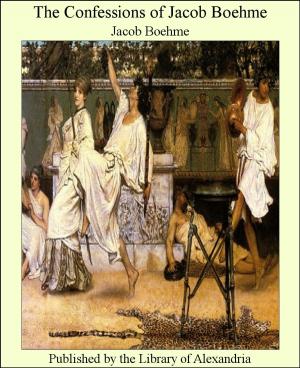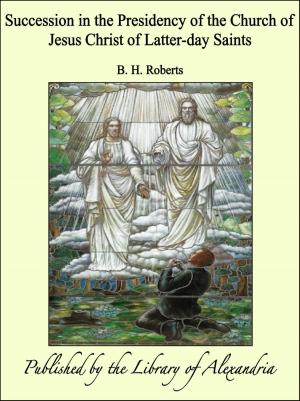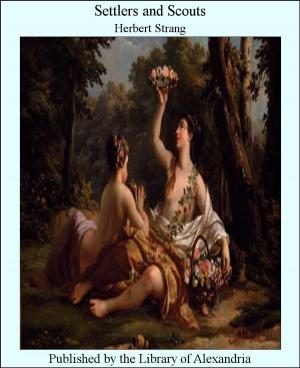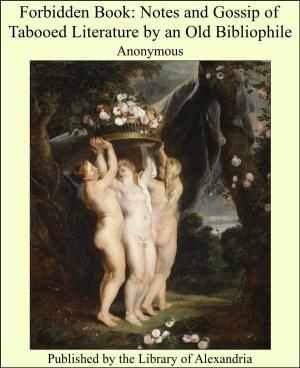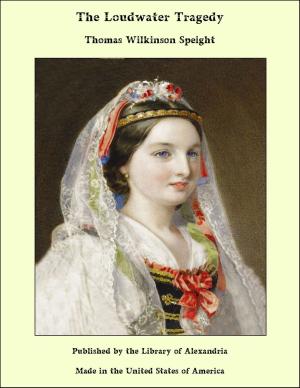Bell's Cathedrals: The Cathedral Church of Exeter, A Description of Its Fabric and a Brief History of the Episcopal See
Nonfiction, Religion & Spirituality, New Age, History, Fiction & Literature| Author: | Percy Addleshaw | ISBN: | 9781465542601 |
| Publisher: | Library of Alexandria | Publication: | March 8, 2015 |
| Imprint: | Language: | English |
| Author: | Percy Addleshaw |
| ISBN: | 9781465542601 |
| Publisher: | Library of Alexandria |
| Publication: | March 8, 2015 |
| Imprint: | |
| Language: | English |
In reissuing this handbook, which during the lapse of twenty-three years had become out of date in many ways, the editor has introduced considerable alterations in the arrangement of the matter, with a view to facilitating its use as a guide to the various parts of the Cathedral. For suggestions as to this, and for numerous improvements and corrections in detail he is particularly indebted to Miss Beatrix F. Cresswell, whose published works "Exeter Churches," "Notes on the Churches of the Deanery of Ken," and "Edwardian Inventories for the City and County of Exeter" have made her an authority on the ecclesiology of the Diocese. EXETER CATHEDRAL, FROM THE SOUTH. The history of any ancient cathedral must always be interesting, and that of Exeter is no exception, though "it supplies less of architectural history than those churches whose whole character has been altered over and over again." A cathedral represents not only the spiritual, but the active, laborious, and artistic life of past generations. The bishop, too, was in many ways the head man of the province, and combined, not seldom, the varied qualities of priest, warrior, and statesman. The acts of such ecclesiastics were full of importance, not for their own city only, but often also for the whole nation. As men who had frequently travelled much and studied deeply, they summoned to their aid in the building and beautifying of their churches the most skilled artists end artificers of their time; so, with the story of the lives of the bishops of a diocese, the history of a cathedral's building is inextricably woven. To be elevated to a bishopric generally meant to be put into possession of great wealth—when Veysey became bishop the revenues of the see of Exeter have, by some authors, been computed at £100,000; Canon Hingeston-Randolph puts them, with more reason and authority, at the sum of £30,000—and a large portion of this money was spent on works connected with the chief church of the diocese. It is not wonderful, therefore, this generosity being joined to marvellous skill and taste, that our old cathedrals are at once the despair and envy of the modern architect. And it is with a feeling of reverence that one recalls the history of those who built in the heart of each populous city "grey cliffs of lonely stone into the midst of sailing birds and silent air." The story of Exeter has an unique interest, and its church, as we shall see, is in many respects without a rival. The fact that a building of such great beauty should adorn a city so situated is remarkable; for long after—as we read in Macaulay—weekly posts left London for various parts of England, Exeter was still, as it were, on the borders of territories scarcely explored, and was the furthest western point to which letters were conveyed from the metropolis. Fuller thus describes the county of Devonshire in his day (1646): "Devonshire hath the narrow seas on the South, the Severn on the North, Cornwall on the West, Dorset and Somersetshire on the East. A goodly province, the second in England for greatness, clear in view without measuring, as bearing a square of fifty miles. Some part thereof, as the South Hams, is so fruitful it needs no art; but generally (though not running of itself) it answers to the spur of industry. No shire showes more industrious, or so many Husbandmen, who by Marle (blew and white), Chalk, Lime, Seasand, Compost, Sopeashes, Rags and what not, make the ground both to take and keep a moderate fruitfulness; so that Virgil, if now alive, might make additions to his Georgicks, from the Plough-practice in this county. As for the natives thereof, generally they are dexterous in any employment, and Queen Elizabeth was wont to say of the gentry: They were all born courtiers with a becomming confidence
In reissuing this handbook, which during the lapse of twenty-three years had become out of date in many ways, the editor has introduced considerable alterations in the arrangement of the matter, with a view to facilitating its use as a guide to the various parts of the Cathedral. For suggestions as to this, and for numerous improvements and corrections in detail he is particularly indebted to Miss Beatrix F. Cresswell, whose published works "Exeter Churches," "Notes on the Churches of the Deanery of Ken," and "Edwardian Inventories for the City and County of Exeter" have made her an authority on the ecclesiology of the Diocese. EXETER CATHEDRAL, FROM THE SOUTH. The history of any ancient cathedral must always be interesting, and that of Exeter is no exception, though "it supplies less of architectural history than those churches whose whole character has been altered over and over again." A cathedral represents not only the spiritual, but the active, laborious, and artistic life of past generations. The bishop, too, was in many ways the head man of the province, and combined, not seldom, the varied qualities of priest, warrior, and statesman. The acts of such ecclesiastics were full of importance, not for their own city only, but often also for the whole nation. As men who had frequently travelled much and studied deeply, they summoned to their aid in the building and beautifying of their churches the most skilled artists end artificers of their time; so, with the story of the lives of the bishops of a diocese, the history of a cathedral's building is inextricably woven. To be elevated to a bishopric generally meant to be put into possession of great wealth—when Veysey became bishop the revenues of the see of Exeter have, by some authors, been computed at £100,000; Canon Hingeston-Randolph puts them, with more reason and authority, at the sum of £30,000—and a large portion of this money was spent on works connected with the chief church of the diocese. It is not wonderful, therefore, this generosity being joined to marvellous skill and taste, that our old cathedrals are at once the despair and envy of the modern architect. And it is with a feeling of reverence that one recalls the history of those who built in the heart of each populous city "grey cliffs of lonely stone into the midst of sailing birds and silent air." The story of Exeter has an unique interest, and its church, as we shall see, is in many respects without a rival. The fact that a building of such great beauty should adorn a city so situated is remarkable; for long after—as we read in Macaulay—weekly posts left London for various parts of England, Exeter was still, as it were, on the borders of territories scarcely explored, and was the furthest western point to which letters were conveyed from the metropolis. Fuller thus describes the county of Devonshire in his day (1646): "Devonshire hath the narrow seas on the South, the Severn on the North, Cornwall on the West, Dorset and Somersetshire on the East. A goodly province, the second in England for greatness, clear in view without measuring, as bearing a square of fifty miles. Some part thereof, as the South Hams, is so fruitful it needs no art; but generally (though not running of itself) it answers to the spur of industry. No shire showes more industrious, or so many Husbandmen, who by Marle (blew and white), Chalk, Lime, Seasand, Compost, Sopeashes, Rags and what not, make the ground both to take and keep a moderate fruitfulness; so that Virgil, if now alive, might make additions to his Georgicks, from the Plough-practice in this county. As for the natives thereof, generally they are dexterous in any employment, and Queen Elizabeth was wont to say of the gentry: They were all born courtiers with a becomming confidence



